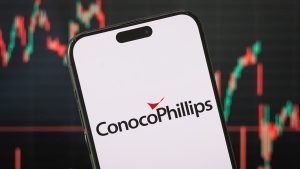The FTSE 100 lagged the S&P 500 for many years, until 2022 that is. It was the lack of technology stocks in the Footsie that was long seen as its biggest weakness. This led it to earn a rather unflattering reputation among some investors as outdated and dull. It was often seen as an index that was devoid of dynamic growth, only good for picking up stable dividends from boring banks, miners and oil giants.
The exciting growth companies were listed across the pond in the US, including the high-flying ‘FAANG’ stocks. From 2011 to 2021, the S&P 500 gained nearly 300%. In comparison, the FTSE 100’s return over that decade was a paltry 20%, excluding dividends.
A turnaround in fortunes
However, the very reason that the FTSE 100 was ridiculed (it was too pedestrian) is essentially the same reason it has fared much better than most other global indexes this year (it’s stable). A dramatic sell-off in richly-valued tech stocks in the US this year has left the S&P 500 down 18% since January.
The FTSE 100 still looks cheap to me though. Its price-to-earnings (P/E) ratio stands at 12, over a trailing 12-month (TTM) period. And the TTM dividend yield is 3.4%, which is over a third higher than the S&P 500’s (at 2.1%).
The US index is trading at a P/E of around 21, which is almost double that of the Footsie. With a cheap valuation and a nice 3.4% yield, I think the UK index looks very good value for money.
At $2.3trn, Apple is the world’s largest company by market value, and also the largest in the S&P 500. Its weighting in the index today is approximately 6.7%.
Apple is down 20% this year, whereas the largest stock in the FTSE 100 (oil giant Shell) is up 37% over the same period.
It’s important to remember that we’re talking about relative outperformance here. The Footsie is still down 2% year-to-date, so it’s not like the UK index is blowing the barn doors off.
This means that it could fall another 2% in 2023 and still outperform the S&P 500, if the US index drops by more.
Morgan Stanley has said it believes major economies are already in recession. So I think stable dividends are going to be highly valued for the foreseeable future.
I also think geopolitical events will keep the price of oil and gas elevated throughout 2023, which will support the share prices of energy companies. Of course, there are oil and gas giants in the S&P 500. But they don’t have anywhere near the influence on the index’s performance as, say, Shell and BP do on the FTSE 100.
All in all then, I wouldn’t be surprised to see the UK blue-chip index continue to outperform. With its high yields and stable companies, I think the FTSE 100 offers a safe port during the approaching economic storm.
Will I be buying either index?
I already own a fair few FTSE 100 stocks in my portfolio, including Diageo, Experian, and Scottish Mortgage Investment Trust. As such, I think I have already enough exposure to this index. But I’ve put the S&P 500 on my watchlist in case it drops further.
This post was originally published on Motley Fool





